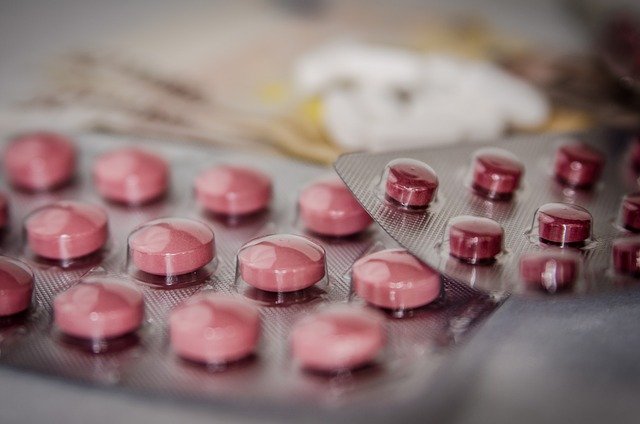Risk mitigation strategies for counterfeit prevention in medicine logistics
Counterfeit medicines threaten patient safety, regulatory compliance, and supply chain integrity. This article outlines layered, practical strategies for pharmacies, telepharmacy and logistics providers to reduce the risk of falsified products entering the distribution network, with attention to cold chain handling, tracking, and customs controls.

Counterfeit medicines can infiltrate the supply chain at multiple points, creating safety risks for patients and compliance liabilities for pharmacies, distributors, and logistics partners. Mitigation requires a layered approach that combines operational controls, digital verification, secure packaging, customs cooperation, and robust quality assurance. The sections below describe how telepharmacy and telemedicine workflows can be integrated with logistics practices — including temperature control for cold chain products and last mile safeguards — to reduce the likelihood of falsified or substandard medicines reaching end users.
How can pharmacy and telepharmacy reduce counterfeit risk?
Pharmacies and telepharmacy services act as critical checkpoints. Standard steps include strict supplier vetting, maintaining accredited supplier lists, and verifying batch and lot numbers at receipt. Telepharmacy systems can incorporate product master data and allow remote pharmacists to cross-check provenance before dispensing. Training staff to recognize tamper-evident seals, altered labeling, and unusual packaging is essential. Periodic reconciliation and audits of inventory records along with documented chain-of-custody help detect discrepancies that may indicate diversion or counterfeiting.
What role does telemedicine play in preventing falsified products?
Telemedicine consultations offer opportunities to confirm appropriate therapies and detect mismatches between prescriptions and available products. Clinicians working with pharmacists via secure telemedicine channels can compare prescribed formulations and check serialized identifiers or QR codes during dispensing. Documenting clinical decisions and prescription details improves traceability if a product is later suspected of being counterfeit. Secure, privacy-preserving communication between clinicians, pharmacists, and logistics teams supports coordinated investigations while protecting patient information.
How do logistics and supply chain controls secure medicines?
Logistics providers should implement end-to-end tracking, strict supplier controls, and audited handoffs to limit counterfeit ingress. Actions include accredited transporter programs, tamper-evident transport containers, and mandatory chain-of-custody records at each node. Inventory reconciliation at receiving points and periodic supplier audits reduce opportunities for substitution or diversion. Collaboration among manufacturers, wholesalers, logistics firms, and pharmacies establishes trusted routes, exception-handling protocols, and rapid quarantine procedures when anomalies are detected.
How should cold chain and temperature control be managed?
Temperature-sensitive products require additional safeguards because compromised cold chain conditions can obscure or magnify product quality issues. Use calibrated temperature control devices, continuous monitoring, and alarmed refrigeration during storage and transit. Attach data loggers to shipments that upload temperature records to central dashboards for real-time visibility. Validated passive or active thermal packaging, together with clear standard operating procedures for handling and contingency plans for excursions, preserves product integrity and reduces opportunities for counterfeit replacement under the guise of damaged goods.
What tracking, packaging, and last mile tactics help prevention?
Item-level serialization, unique barcodes, or QR codes enable traceability from manufacturer to patient; secure ledgers or blockchain systems can record immutable transfer events. Packaging should include tamper-evident features, clear lot identifiers, and easily verifiable seals so pharmacists and recipients can confirm authenticity. For last mile delivery, authenticated courier identities, controlled handoff protocols, and real-time tracking reduce windows for interception or substitution. Sustainable packaging choices can incorporate security features to balance environmental goals with anti-counterfeit needs.
How do compliance, privacy, customs and quality assurance intersect?
Regulatory compliance, customs screening, and quality assurance testing are complementary defenses. Quality assurance steps at receipt — such as sampling and analytical verification for high-risk products — support regulatory reporting and trigger recalls when necessary. Customs cooperation, advance electronic documentation, and trusted trader programs help screen consignments before entry, reducing illicit imports. Privacy-preserving data governance is crucial when sharing patient prescriptions or clinical records across telepharmacy and telemedicine platforms; encryption, role-based access, and audit trails protect sensitive information while ensuring traceability for investigations.
This article is for informational purposes only and should not be considered medical advice. Please consult a qualified healthcare professional for personalized guidance and treatment.
Conclusion Preventing counterfeit medicines in logistics requires coordinated, layered actions across pharmacies, telepharmacy and telemedicine workflows, logistics providers, customs authorities, and regulators. Combining supplier controls, item-level tracking, tamper-evident packaging, rigorous cold chain monitoring, and strong quality assurance reduces exposure to falsified products. Continuous staff training, transparent data sharing under privacy safeguards, and regular audits help sustain a resilient, compliance-focused delivery system that protects patients and preserves supply chain integrity.






